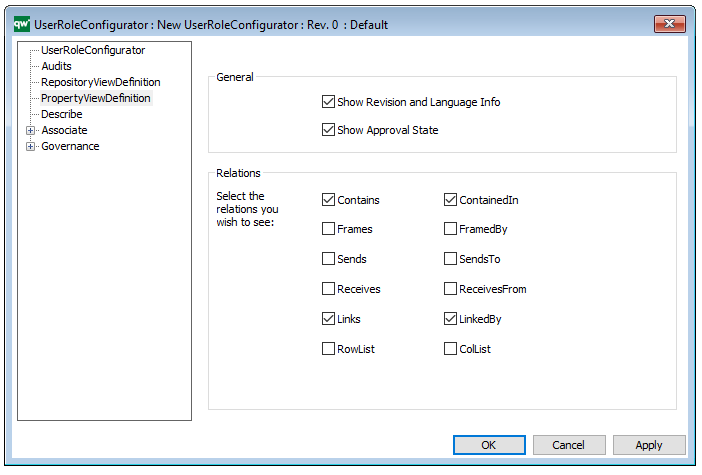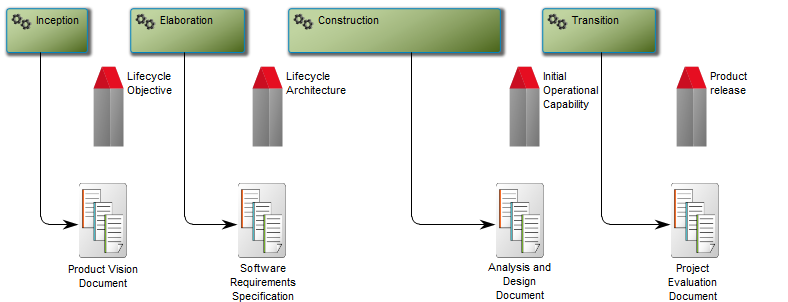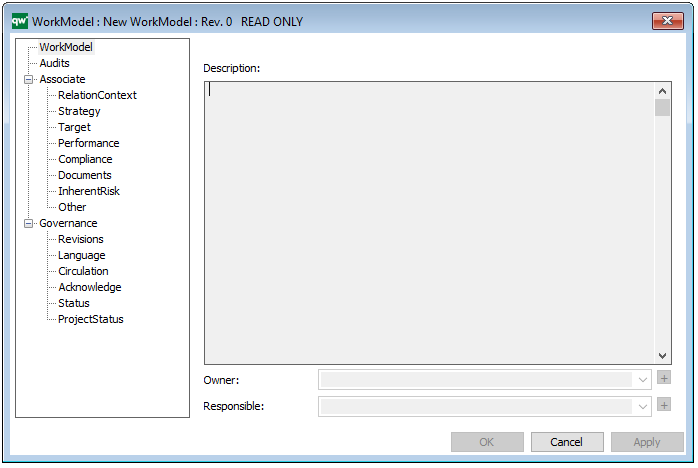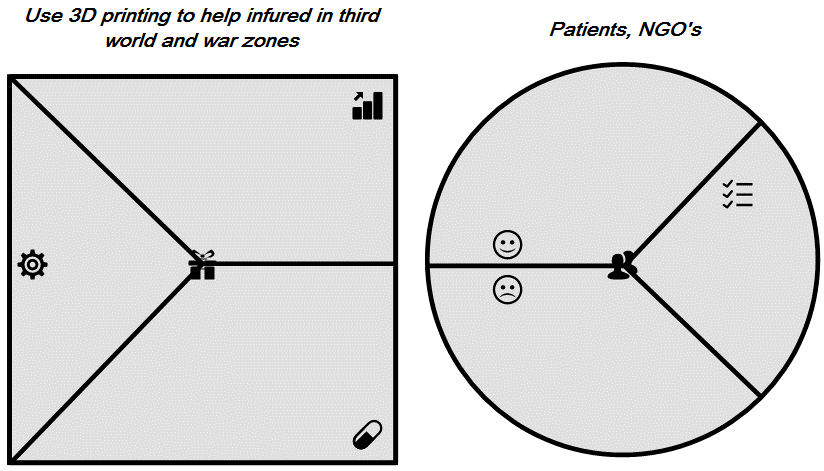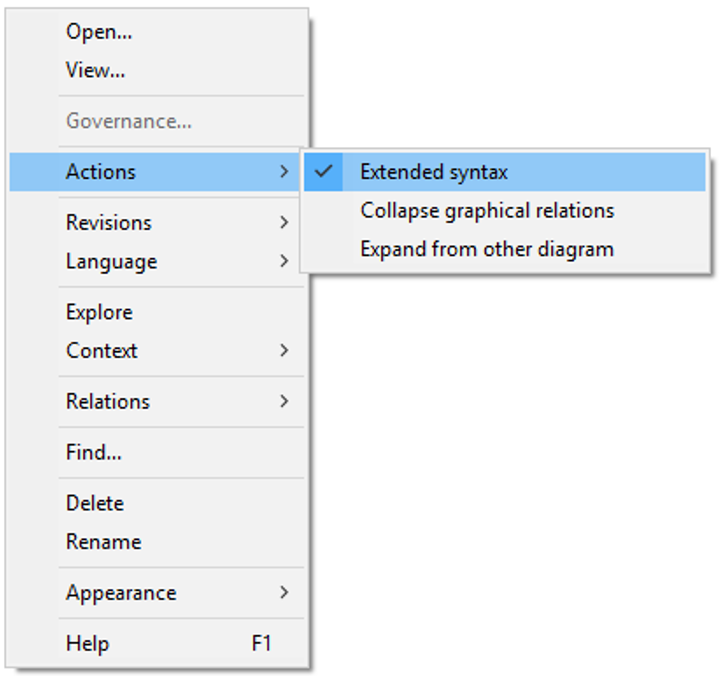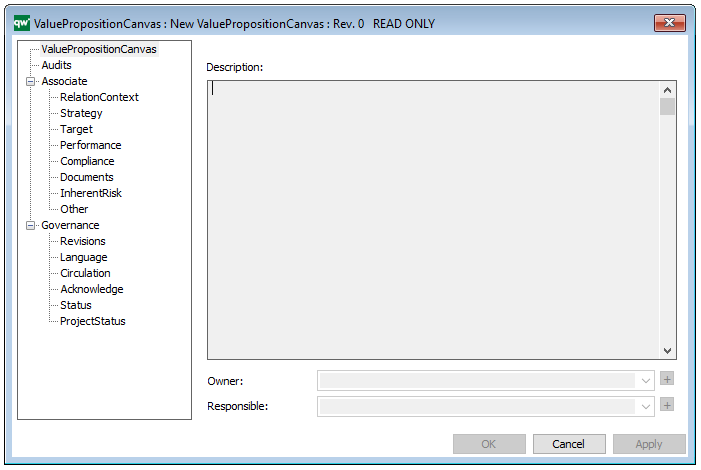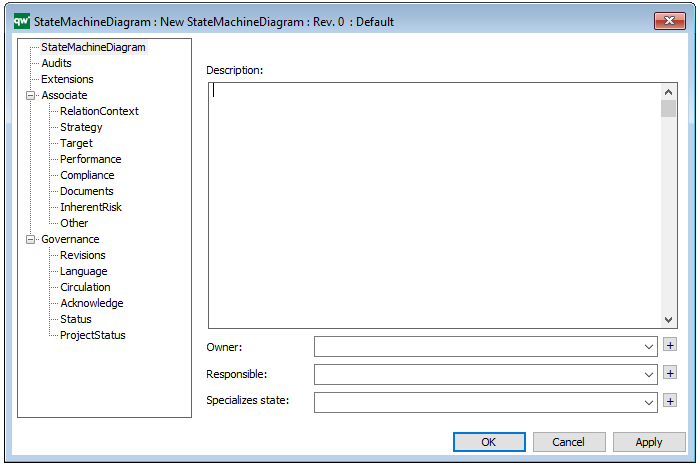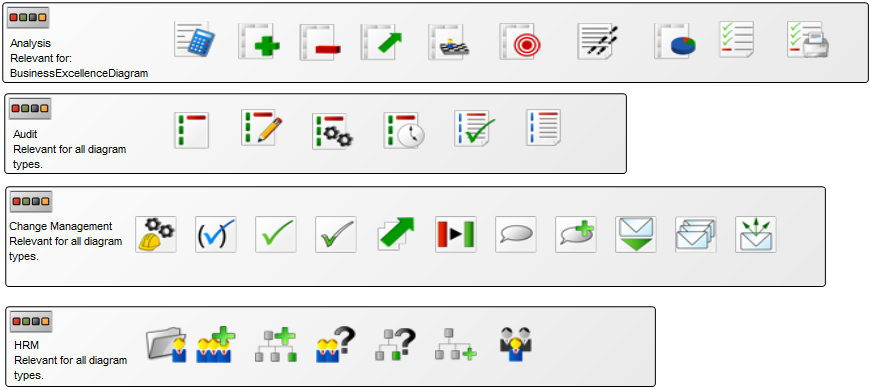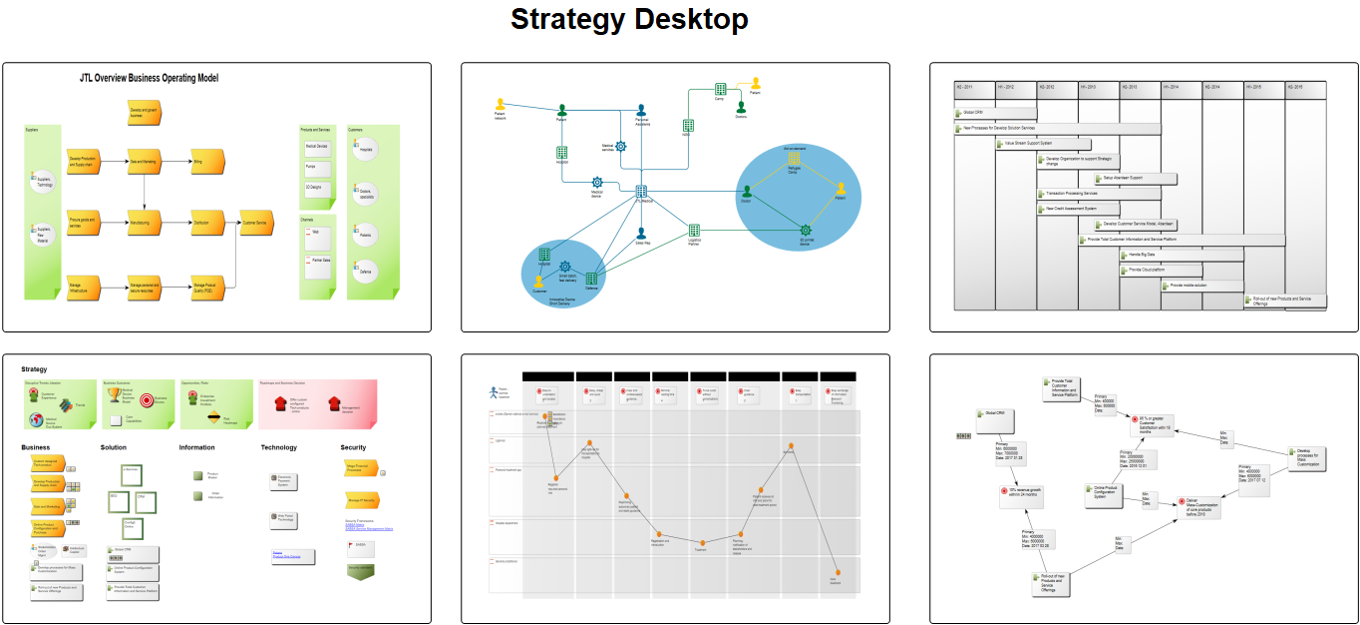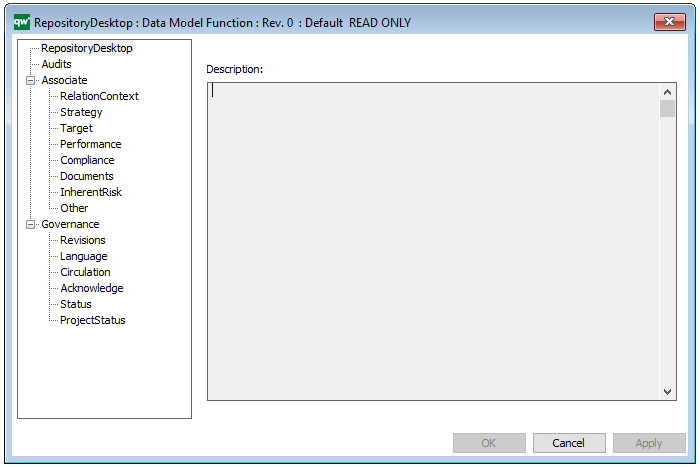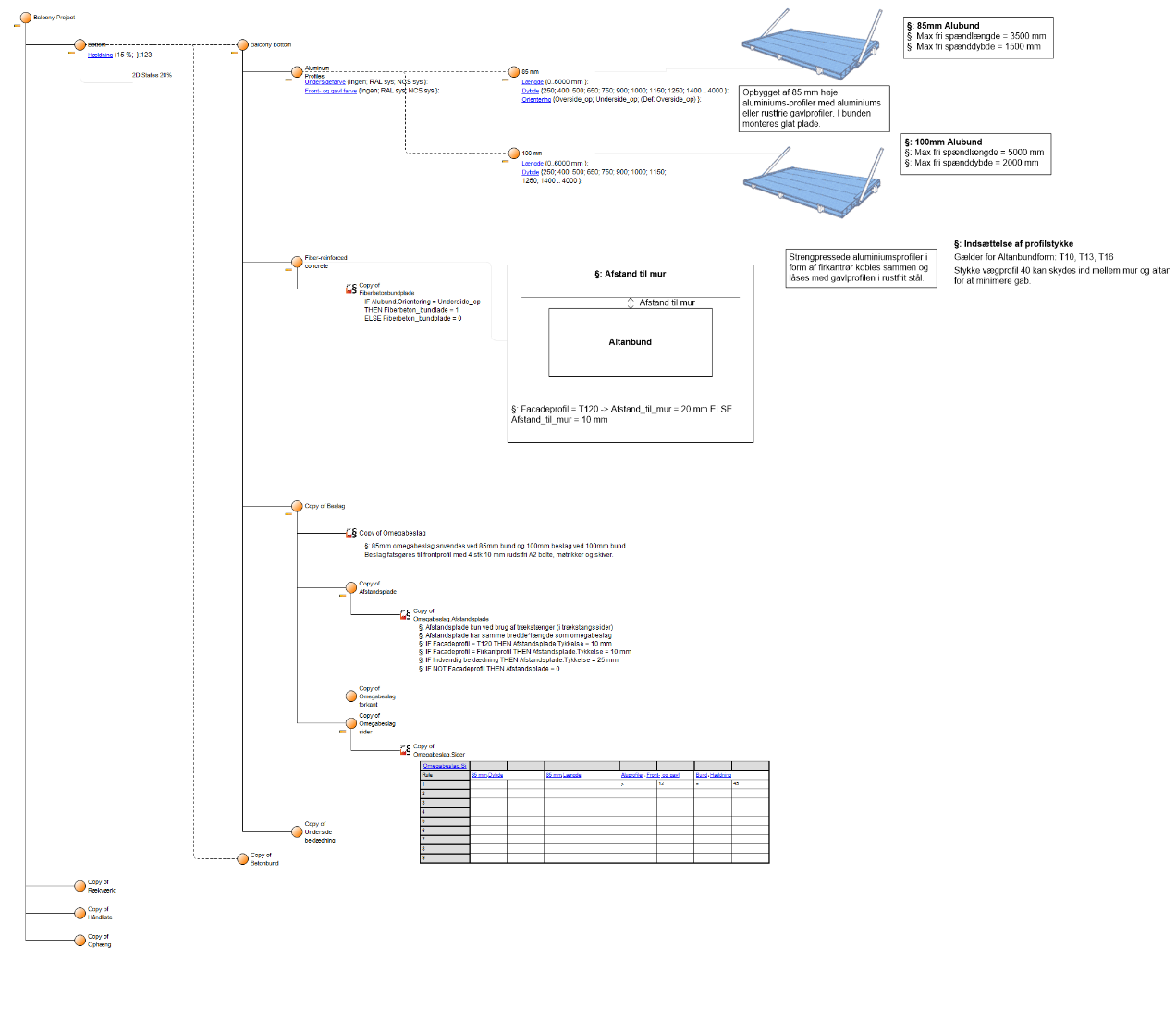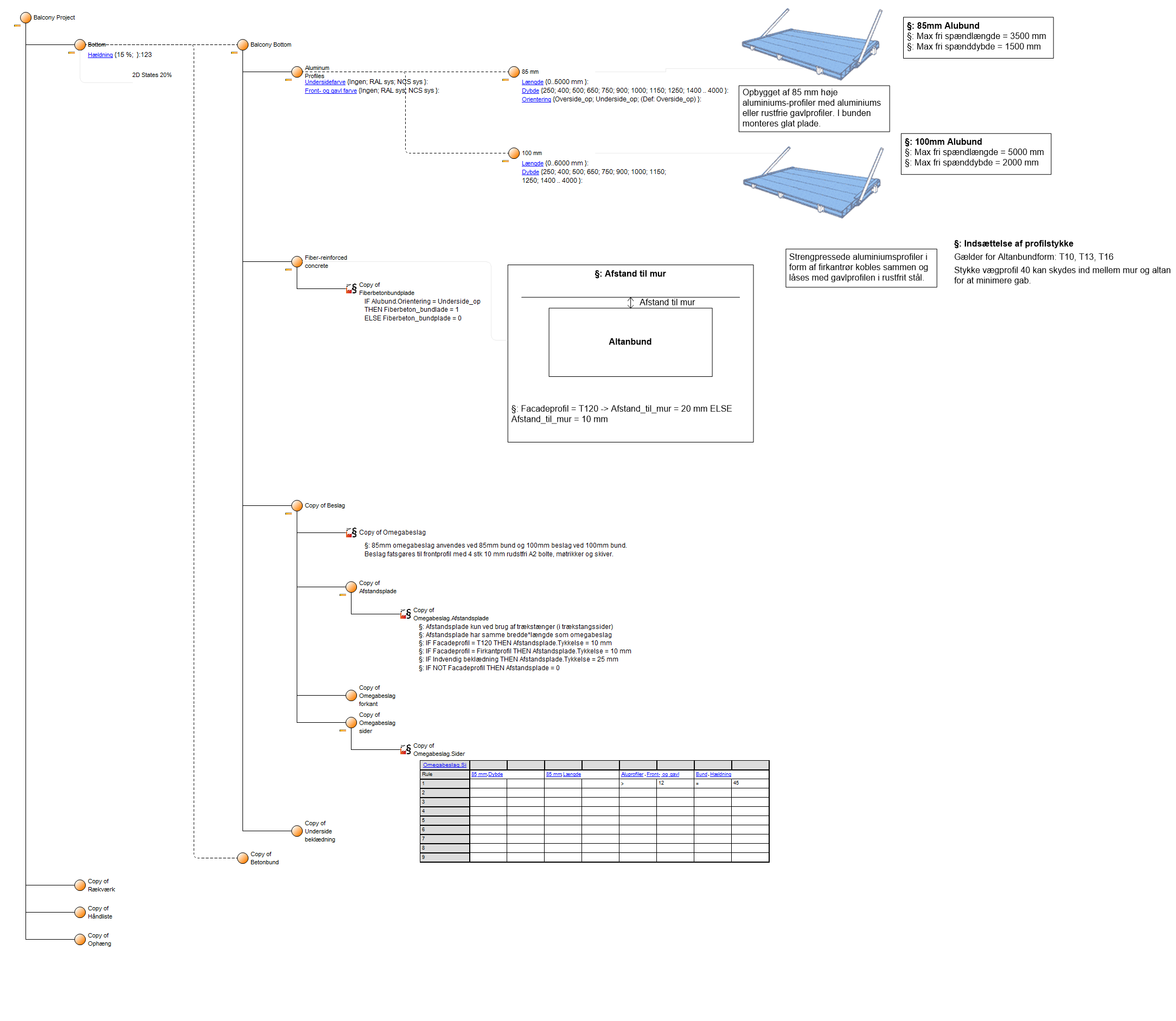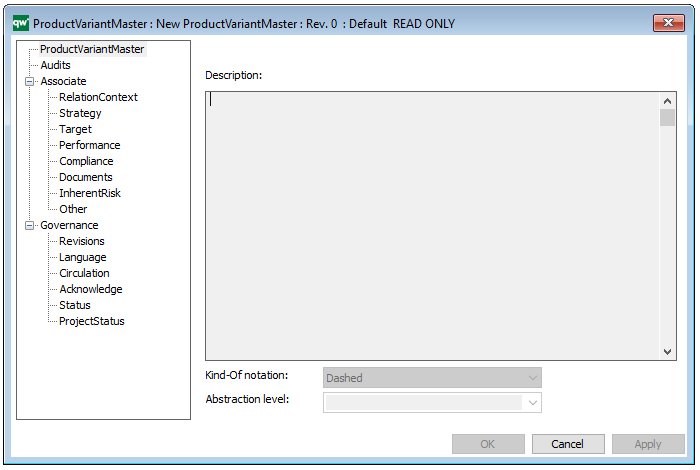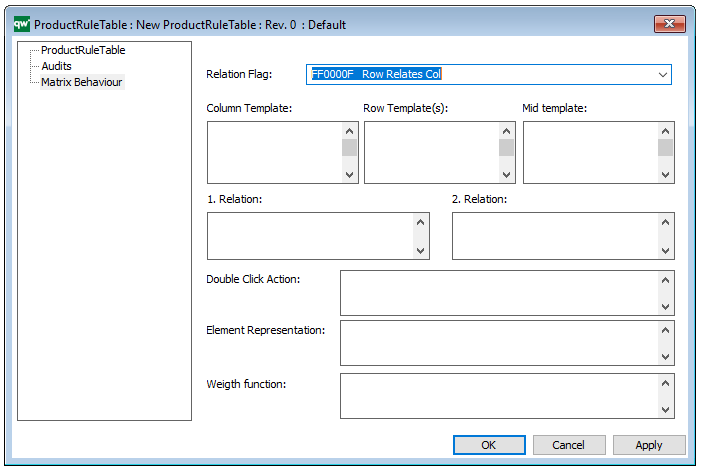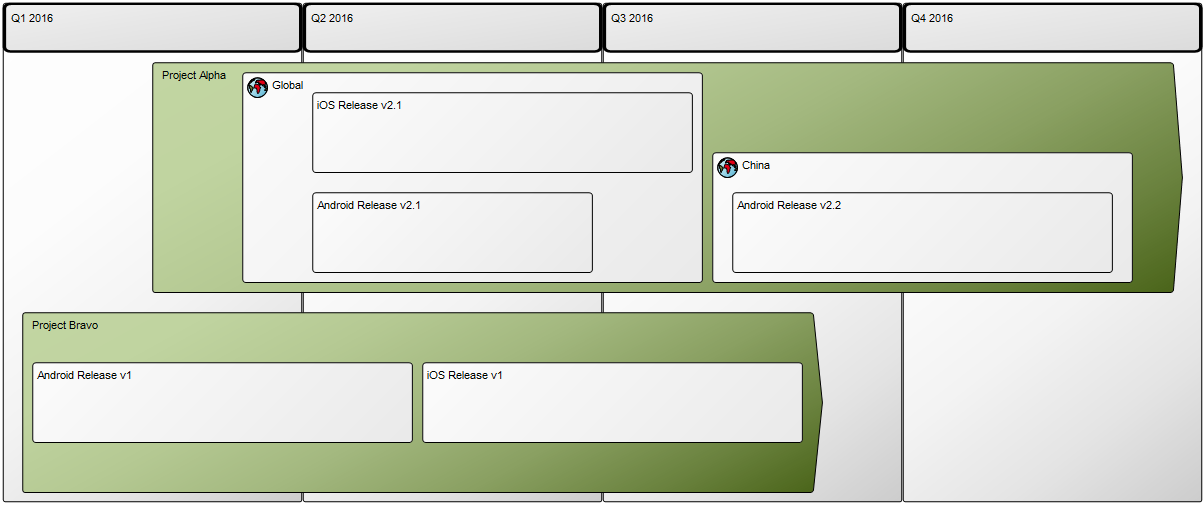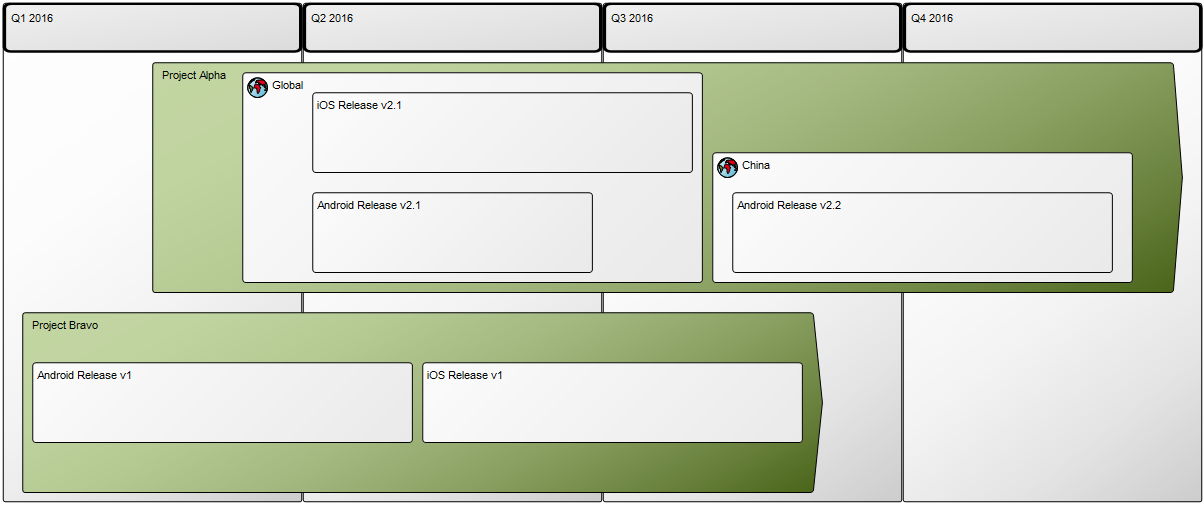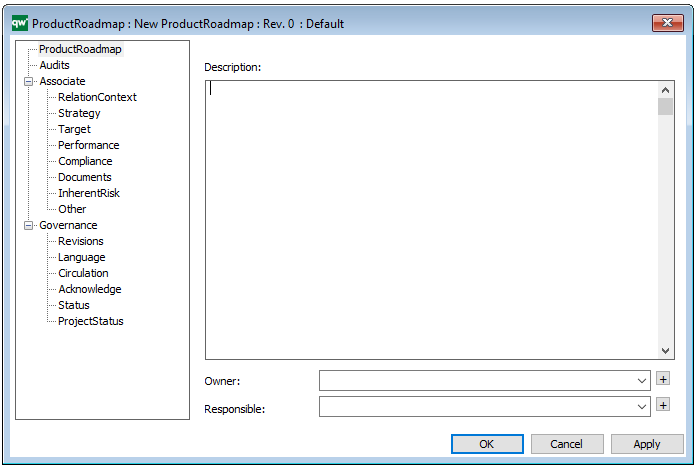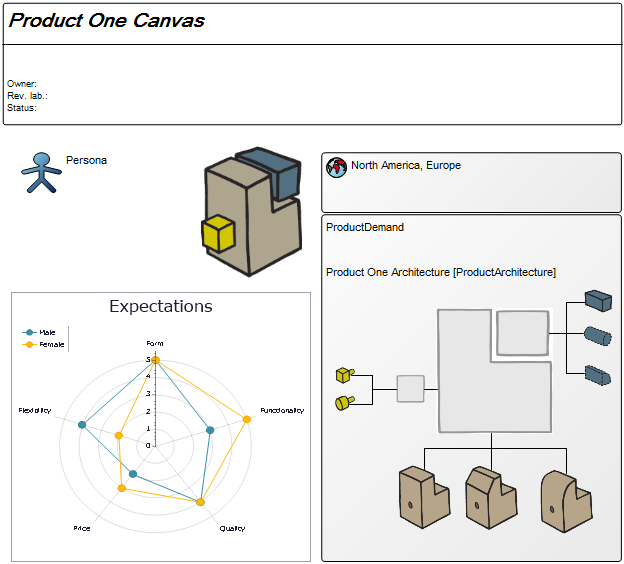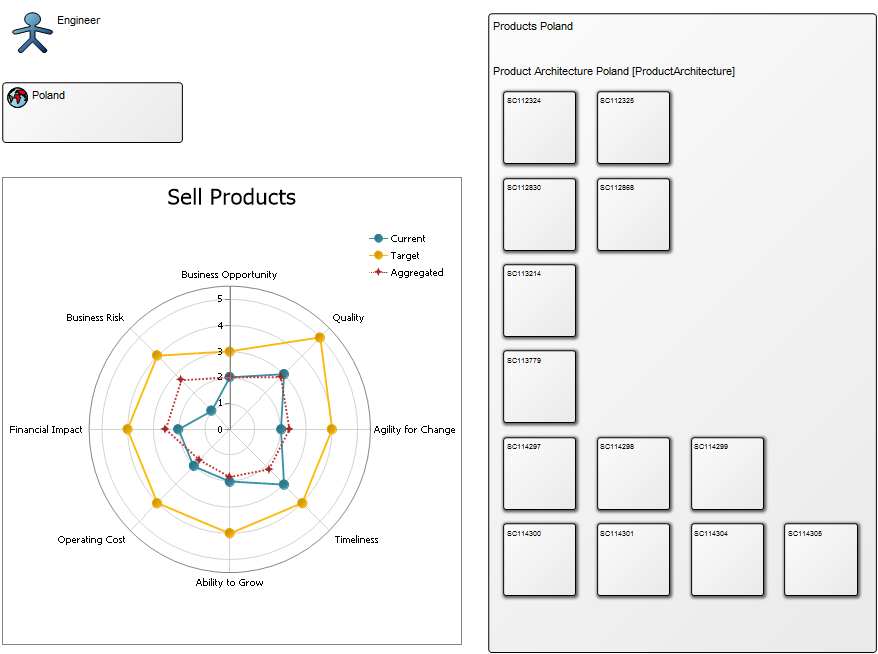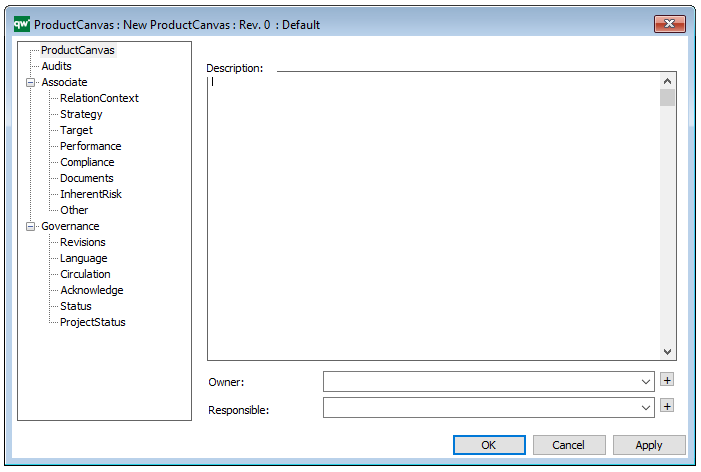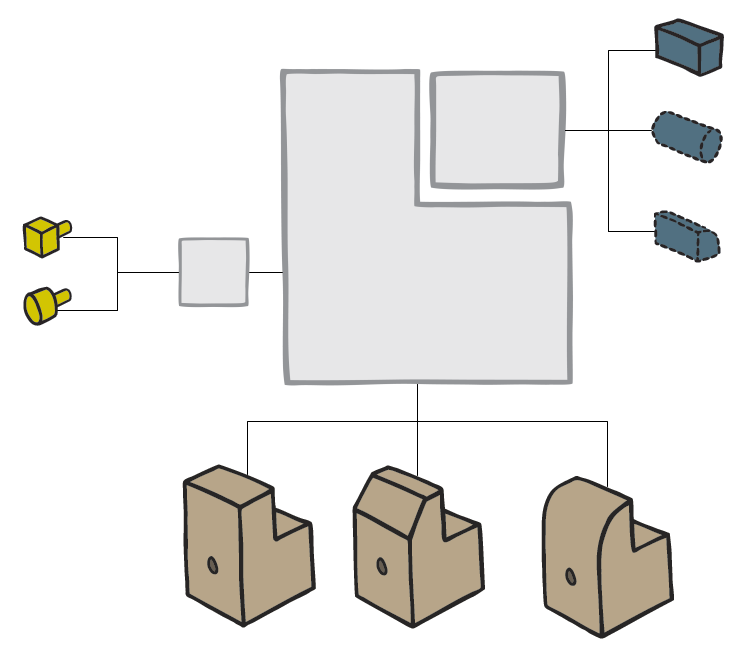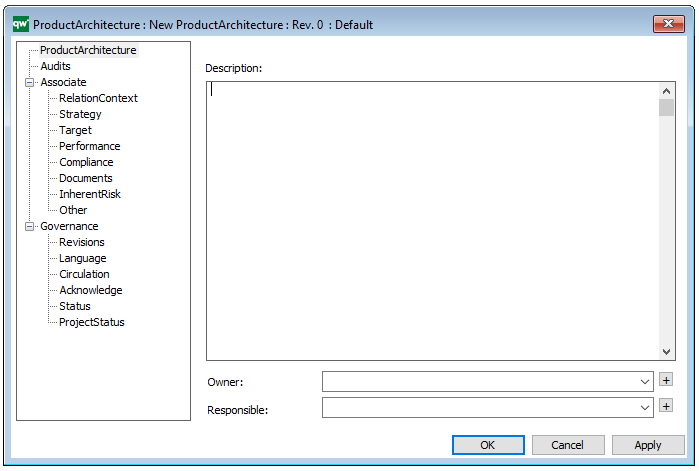Purpose: The purpose of the User Role Configurator template is for the QLM user to create his or her personalized workspace featuring only chosen repository views.
Core concerns: The User Role Configurator template is a system template in QLM. It enables you to create and attach Repository View Definitions, Property View Definitions and Sub Tab View Definitions to the User Role Configurator. Where the information in the User Role Configurator decides which filters will be shown in QLM, the different view definitions define what the filters should contain. Below, you can see a screenshot of the QLM workspace. The repository view, which this template can configure, is marked with a red arrow and framed by a red square:

‘Relation to other templates: To run, the User Role Configurator template must have a corresponding QualiWare Setup template to execute its code. Where the HTML templates pertain to the setup of the collaboration platform, the User Role Configurator template is solely concerned with the workspace in QLM.
Properties and metadata: The User Role Configurator template can for example retain the following information:
- A description of the User Role
- Audits (auto generated information regarding its current state and access rights)
- Repository View Definition, detailing the standard views the User Role should make available
- Property View Definition, detailing which relations should be visible

The above picture shows the properties dialogue window for the User Role Configurator template, where you can view and edit the diagram’s properties in QualiWare Lifecycle Manager. Below you can see the tabs for Repository View Definition and Property View Definition:
